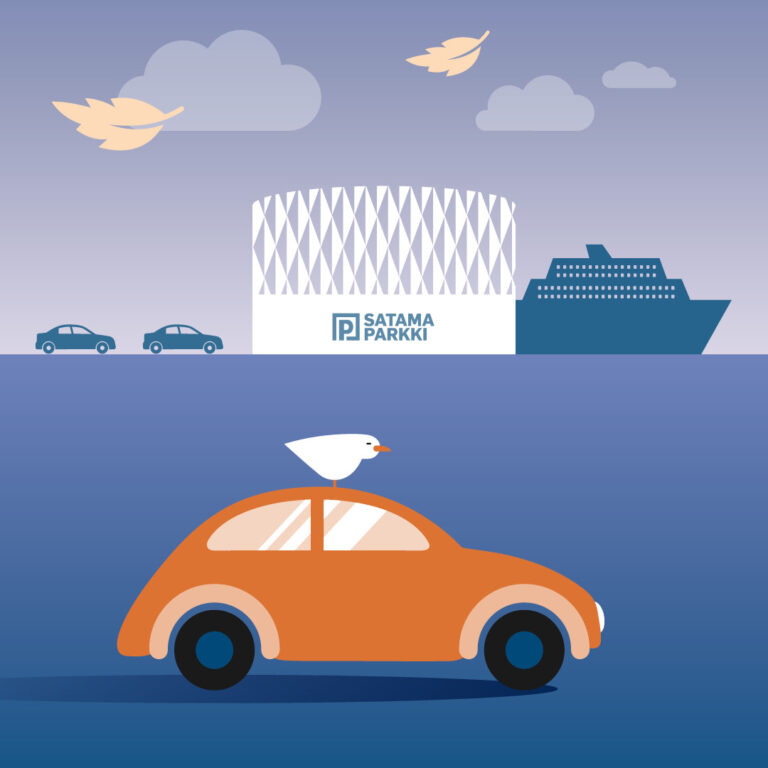
Development programme FAQ
Frequently asked questions
The development programme is a joint project of the Port of Helsinki and the City of Helsinki, in which we reorganise harbour operations and make major long-term investments in the development of Helsinki’s port infrastructure.
The development programme consists of the following goals:
- RoPax traffic to and from Tallinn will be concentrated in the West Harbour, while RoPax traffic to and from Stockholm will be concentrated in Katajanokka Harbour.
- A two-kilometre-long harbour tunnel will be built from the West Harbour to Länsiväylä road.
- RoPax traffic operations will end in the South Harbour. In the future, a smaller portion of the South Harbour will be reserved for international cruise and high-speed vessel traffic.
- The South Harbour will open to Helsinki residents in a new way: the area will feature the architecture museum, cafés, office buildings and a coastal path connecting Kaivopuisto Park and the Market Square.
- Vuosaari Harbour will be developed to meet the needs of cargo transport.
First, we will carry out alterations in the West Harbour, where the project is expected to be completed in 2032. Overall, the development programme will be completed by the end of the 2030s. Port of Helsinki Ltd will be responsible for all the programme’s costs.
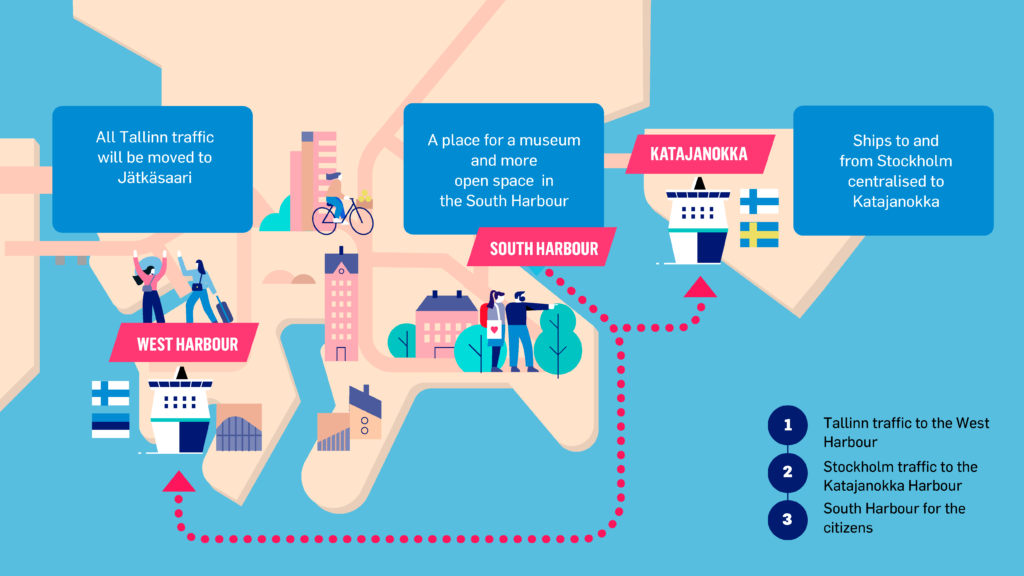
The West Harbour is by far the largest passenger harbour in Helsinki. The renewal project there is being carried out in three parts. RoPax traffic to and from Tallinn will be concentrated in the West Harbour, which requires development of the whole area and improved traffic connections between the West Harbour and Länsiväylä. The West Harbour will have:
- The harbour tunnel, a two-way route from the West Harbour to Länsiväylä for heavy traffic and passenger car traffic into the harbour.
- The T1 Terminal – Jätkäsaari Maritime Centre, which will replace the old terminal to be demolished. The new terminal will also offer services to the residents of the surrounding Jätkäsaari neighbourhood.
- New quay and field arrangements along which the quay area in the West Harbour will be expanded and the quays will be renovated.
After the expansion, the West Harbour will have:
- an area of 17 hectares
- two passenger terminals
- four stern ramp berths
- a harbour tunnel connecting the West Harbour and Länsiväylä
- an 11-metre-deep fairway.
The costs of the development programme in their entirety are an investment made by the Port of Helsinki Ltd.
All RoPax traffic between Tallinn and Helsinki will be concentrated in the West Harbour, which will increase the traffic volumes. RoPax traffic refers to the transportation of both freight vehicles and passengers on the same vessel. Increased traffic volumes highlights why building a tunnel is important, since the streets in the Jätkäsaari district are already prone to disruptions and congestions, as things stand.
The harbour tunnel will be built so that the harbour traffic between Länsiväylä and the West Harbour will be smooth and as disruption-free as possible. The West Harbour will become more accessible, and heavy traffic will be directed entirely away from the rest of the street network.
Centralising Tallinn traffic in the West Harbour will allow for Stockholm traffic to be centralised in Katajanokka. This will free the South Harbour area to be used by residents in more enjoyable ways. The harbour tunnel will also reduce heavy traffic in central Helsinki as the road traffic that previously departed for Tallinn from Katajanokka will run through the West Harbour in the future.
The upper image depicts the current placement of the tunnel’s northern opening between Lapinlahti Park and the Ilmarinen Building, while the lower image depicts the situation once the tunnel is completed. The lower image also depicts the cycling lane planned by the City in red.
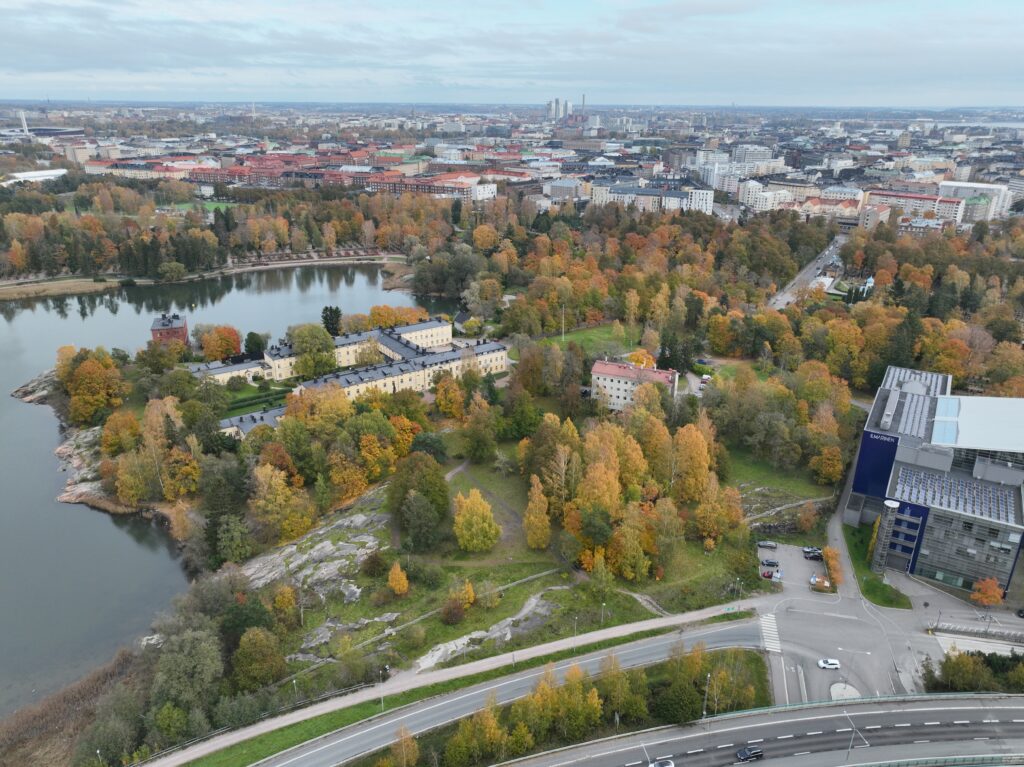
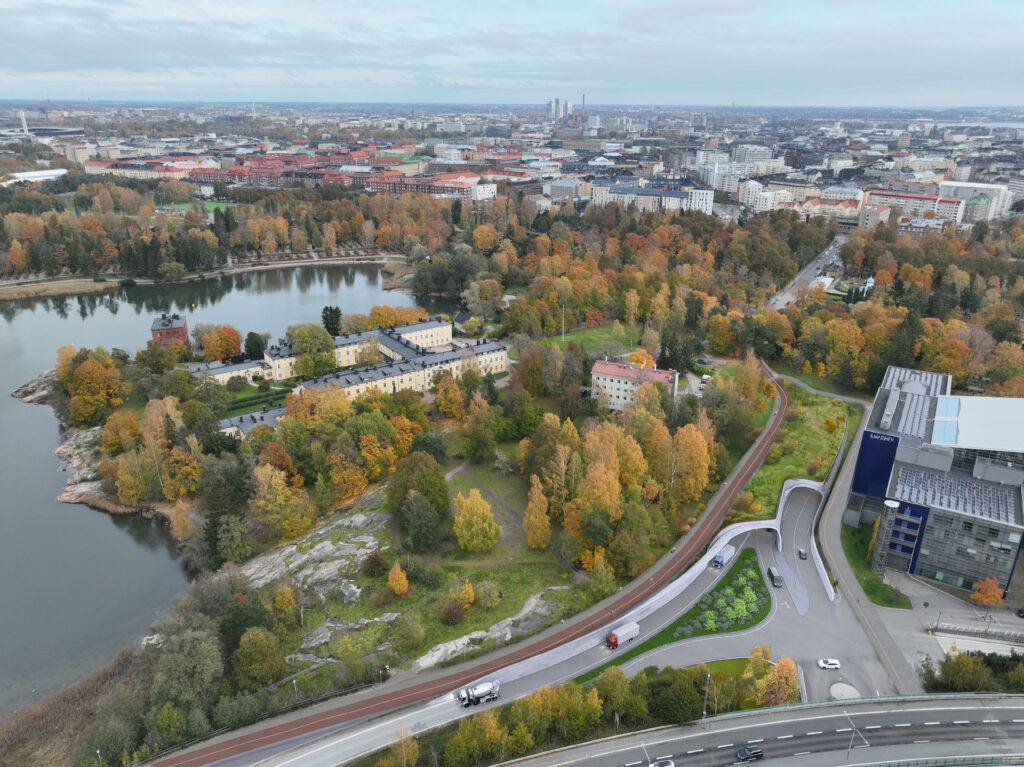
The cost estimate for the tunnel option selected for further planning is about EUR 300 million.
The planned location for the northern entrance/exit of the harbour tunnel is at the edge of Lapinlahti Park, which is one of the most significant green zones in southern Helsinki. In total, the structures of the harbor tunnel’s open pit extend to the Lapinlahti park side from an area of about 700 square meters. This corresponds to about 1% of the area of the park.
The key question of nature values is about securing the habitat for the endangered species living in the park: the Siberian flying squirrel and the Depressaria chaerophylli moth. Securing the survival of these species is a prerequisite for building the tunnel.
The Port of Helsinki has discovered solutions to secure the living conditions for the species: the tunnel will be built so that the section opening above the ground is minimised. The solution will ensure that trees remain in the flying squirrel’s core habitat, and areas with bulbous chervil growth will also be conserved more extensively than what was originally planned. The bulbous chervil is a plant that the endangered moth eats.
We will also secure the living conditions for the moths by planting bulbous chervil for them to eat elsewhere in the park. The planting has already begun, and its success is being monitored regularly.
We will continue to cooperate closely with the authorities to conserve nature values in the next planning stages of the project. We will also specify the plans as necessary.
Lapinlahti Dog Park will remain in the area.
Without the tunnel, the West Harbour traffic would be concentrated in the streets. This would cause congestion, especially in the outbound traffic from the harbour, which may lead to long delays and difficulties in the ships’ schedules. The reliability of the West Harbour would suffer since the street network’s susceptibility to disruptions would increasingly affect harbour operations. At the same time, the business of the harbour and the shipping companies would suffer if the traffic were not smooth and predictable.
Without the tunnel, the development options for the traffic between the West Harbour and Länsiväylä would be limited. This would weaken the opportunities for the harbour and the shipping companies to grow their business in the coming decades. At the same time, it would also weaken the international connections required by Finland’s foreign trade.
The comfort and safety of the Jätkäsaari neighbourhood would also suffer as the increased harbour traffic on the streets would cause noise, pollution and traffic problems.
The current T2 terminal in the West Harbour will continue to serve as the terminal for Tallinn traffic. However, the existing T1 terminal in the West Harbour will be demolished in 2025. It will be replaced with a new and modern terminal building.
The Katajanokka passenger terminal is a protected building. It will be renovated extensively for it to be able to receive all Stockholm RoPax traffic. The renovation work is expected to be completed at the turn of the 2030s.
The Port will transfer the Olympia Terminal in the South Harbour to the City once the development programme is completed.
The new Jätkäsaari Maritime Centre will replace the old Terminal 1 building in the West Harbour. The old terminal no longer serves the needs of modern sea travel, and its location cannot accommodate the upcoming traffic arrangements in the area. The building is also at the end of its lifecycle, engineering-wise.
In addition to terminal facilities, the new terminal building can be designed to house commercial, office and parking facilities and other services. The proposal for the terminal area includes a total permitted building volume of 37,000 floor square metres and 600 car parking spaces.
The design and planning for the new Terminal 1 is underway. The old terminal will be demolished in 2025.
As a result of the construction of the harbour tunnel and the new terminal, the quay and field areas of the West Harbour will need to be reorganised.
The berths currently used daily by Tallink and Eckerö Line ships will remain unchanged. They will be supplemented by expanding the quay field towards the south through land reclamation. The quay lines of the berths further north will change. In total, West Harbour will have four stern ramp berths for cruisers.
The alterations will be implemented in stages. The work will begin with an expansion of the southernmost section. It is essential that the harbour’s operations can keep running throughout the development project.
The illustration shows the quay areas after the completion of the West Project:
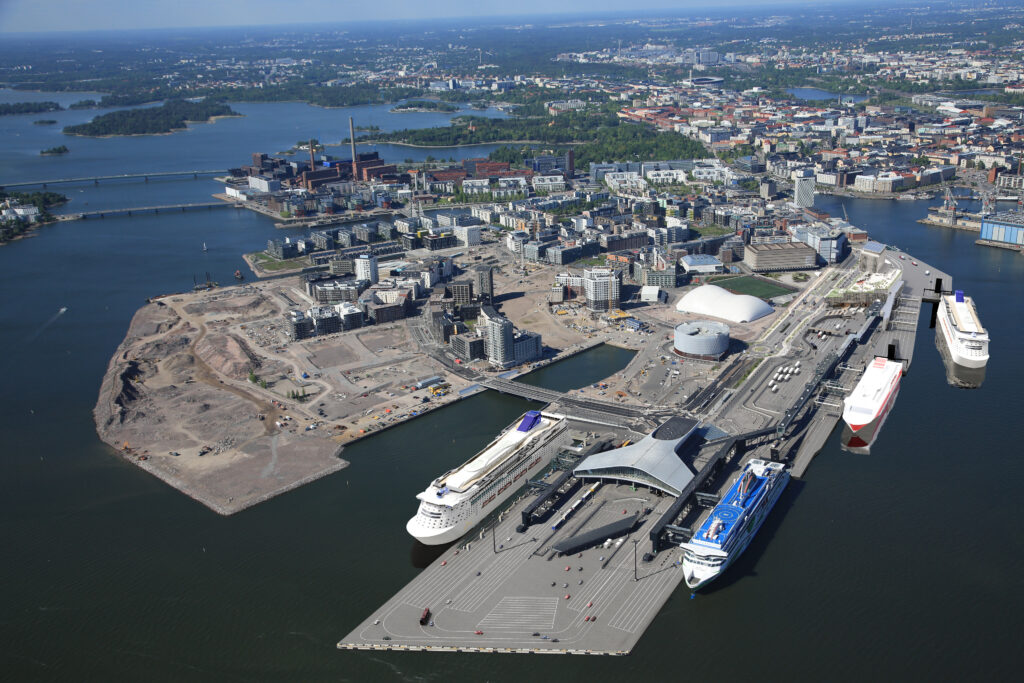
Heavy traffic in Katajanokka will be reduced as the lorry traffic connected to Tallinn ships will move to the West Harbour and only run through the harbour tunnel.
RoPax traffic to and from Stockholm will be concentrated in Katajanokka in the 2030s. After this, heavy traffic in the West Harbour will also be reduced significantly.


